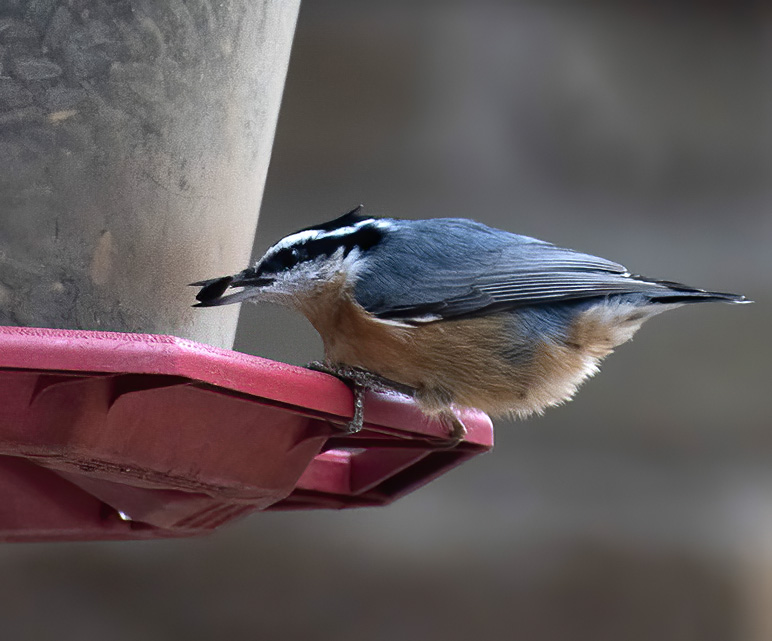
by Grace Huffman
One of my favorite things about the winter season is the return of the Red-breasted Nuthatch. These feisty little birds love climbing headfirst down trees and zipping to and from your birdfeeders. They are irruptive migrants, meaning some winters they do not migrate as far south as others. This year happens to be an irruption year, so they have arrived in droves! I have seen them just about everywhere I’ve birded this winter.
Red-breasted Nuthatches are year-round in a large part of their range, from Canada & southern Alaska to the Rockies and West Coast. Both males and females look similar, but males are brighter and are black on top of the head, while females are slightly duller with a grayer head. They excavate a cavity for their nests, preferring softer wood like aspen, usually in the dead part of the tree. The nest itself is made with materials like grass. The entrance to the next cavity gets covered in resin inside and out, collected from coniferous trees. It’s amazing they manage to keep it off of their feathers! It’s well over a month before the babies hatch & grow up enough to be on their own.
Once winter comes, where they go depends on how much food there is for them up north. If there is less food up north (like this year), they come down farther and we get to see them dash in to grab a sunflower seed that they will either eat right away or cache for later snacking. Red-breasted Nuthatches (and their year-round cousins the White-breasted Nuthatches) love black-oil sunflower seeds and suet. I’ve had Red-breasted Nuthatches eat from my suet feeder, squirrel-proof feeders, and even come right up to my windowsill! Both my front and back yards have several trees, making the area even more attractive to them.
If you are out walking in the woods, listen for them to make their yank-yank-yank calls. They can be very vocal and this sound carries a long way. If you happen to spot them at a feeder, listen closely and you might be able to hear them squeaking.
Thankfully these birds are listed as Least Concern, so hopefully one day while you are out this winter you get to see one, or look out your window to find one zooming in and out!
Reference: Allaboutbirds.org
